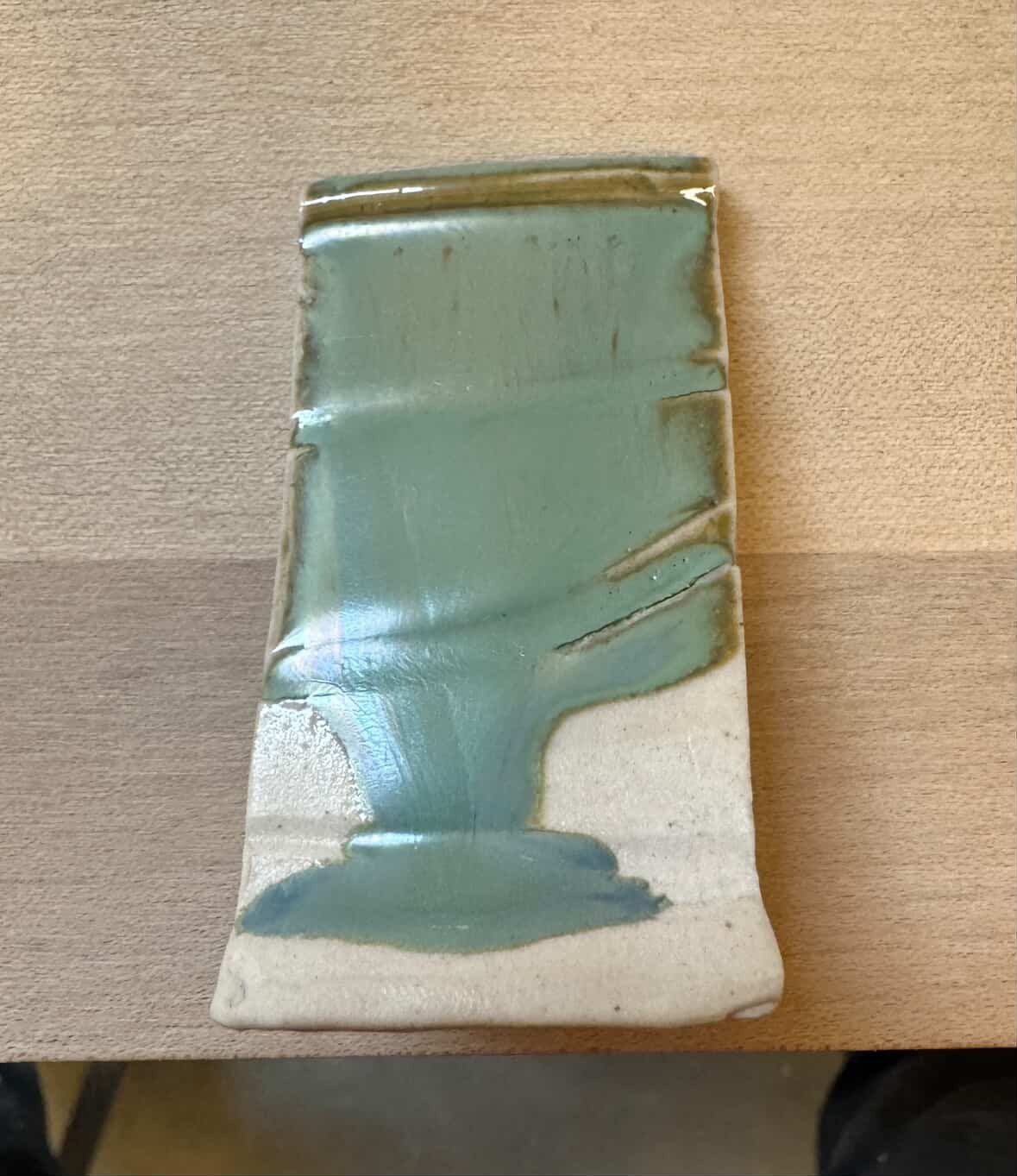| Monthly Tech-Tip | No tracking! No ads! | |
Glazing for the photo instead of the piece.
Is this a “science project” or a functional glaze?
This is a reactive pottery glaze, Jen’s Juicy Fruit. It runs. And crystallizes. That can look great on a test tile but for food surfaces there are strings attached. Behind the magic a tangle of headaches can be lurking: Leaching, crazing, poor durability. And even expense (this kind of melt fluidity usually requires wallet-busting lithium). But hey, why not go for it! Stuff it with metal oxides and get some real sparkle brewing. Then push it even harder, with slow cooling, for those big crystals. Congrats, now you’re brewing a science project. And flirting with leaching and toxicity. And there is more. These effects most often depend on high sodium or potassium (aka high feldspar), that’s a recipe for off-the-charts thermal expansion - and thus crazing. Is this glaze something you would want on a food surface? Suddenly that “wow” glaze starts to look… not so wow.
Hey, why not just fix it? Reduce that high KNaO, increase the SiO2 and Al2O3. Congrats. Now it looks totally different. And boring! With these types of glazes it is common that no matter what you do, you cannot maintain the character while fixing the problem. Why? The visual character depends on the problems! So use this. But not on functional ware.
Videos
Links
| Glossary |
Reactive Glazes
In ceramics, reactive glazes have variegated surfaces that are a product of more melt fluidity and the presence of opacifiers, crystallizers and phase changers. |
Got a Question?
Buy me a coffee and we can talk

https://digitalfire.com, All Rights Reserved
Privacy Policy

